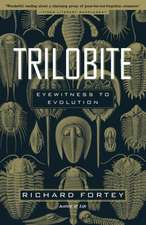Perspectives in Ethology: Volume 4 Advantages of Diversity
Autor Paul Patrick Gordon Bateson, Peter H. Klopferen Limba Engleză Paperback – 26 apr 2012
Preț: 379.39 lei
Nou
Puncte Express: 569
Preț estimativ în valută:
72.64€ • 75.64$ • 60.27£
72.64€ • 75.64$ • 60.27£
Carte tipărită la comandă
Livrare economică 14-28 februarie
Preluare comenzi: 021 569.72.76
Specificații
ISBN-13: 9781461575771
ISBN-10: 146157577X
Pagini: 268
Ilustrații: XIV, 262 p. 2 illus.
Dimensiuni: 152 x 229 x 14 mm
Greutate: 0.36 kg
Ediția:Softcover reprint of the original 1st ed. 1981
Editura: Springer Us
Colecția Springer
Locul publicării:New York, NY, United States
ISBN-10: 146157577X
Pagini: 268
Ilustrații: XIV, 262 p. 2 illus.
Dimensiuni: 152 x 229 x 14 mm
Greutate: 0.36 kg
Ediția:Softcover reprint of the original 1st ed. 1981
Editura: Springer Us
Colecția Springer
Locul publicării:New York, NY, United States
Public țintă
ResearchCuprins
1 The Nature and Description of Behavior Patterns.- I. Abstract.- II. Introduction.- III. Describing Behavior: Two Methods or One?.- IV. The Domains of Regularity.- V. Natural Units of Behavior.- VI. The Description of Behavior Patterns.- VII. Conclusions.- VIII. Summary.- IX. Acknowledgments.- X. References.- 2 Individual Differences in Animal Behavior.- I. Abstract.- II. Introduction.- III. Differences in Feeding Behavior.- IV. Strategies of Behavior.- V. Communication of Identity.- VI. Model Action Patterns.- VII. Adaptiveness or Noise?.- VIII. Conclusion.- IX. Acknowledgments.- X. References.- 3 Toward a Falsifiable Theory of Evolution.- I. Abstract.- II. Introduction.- III. The Tautology of Evolutionary Biology.- IV. The Tautology in Behaviorism.- V. A Resolution of the Tautology.- VI. Some Concluding Remarks.- VII. Acknowledgments.- VIII. References.- 4 Evolutionary, Proximate, and Functional Primate Social Ecology.- I. Abstract.- II. Introduction.- III. Evolutionary Social Ecology.- IV. Proximate Social Ecology.- V. Functional Social Ecology.- VI. Interdigitation of Evolutionary, Proximate, and Functional Social Ecology.- VII. Acknowledgments.- VIII. References.- 5 Social Structure and Individual Ontogenies: Problems of Description, Mechanism, and Evolution.- I. Abstract.- II. Introduction.- III. Ontogenetic Trajectories.- IV. Homeostasis or Steady State?.- V. Evolution of Maturational Controls.- VI. Conclusion.- VII. Acknowledgments.- VIII. Appendix.- IX. References.- 6 On a Possible Relation Between Cultural Transmission and Genetical Evolution.- I. Abstract.- II. Introduction.- III. Components of Intelligence.- IV. Habit and Instinct.- V. Assimilative Selection.- VI. Evolution of Intelligence.- VII. Acknowledgments.- VIII. References.- 7 The Behavior of Organisms, as it is Linked to Genes and Populations.- I. Abstract.- II. Introduction.- III. Integrative Levels in Biology.- IV. Behavior: The Interaction of the Organism with Its Environment.- V. Integrative Levels in the Evolutionary Process.- VI. Acknowledgments.- VII. References.- 8 From Causations to Translations: What Biochemists can Contribute to the Study of Behavior.- I. Abstract.- II. On Levels of Analysis.- III. The Objects of Behavioral Study.- IV. The Inadequacy of Systems Approaches.- V. The Hazards of Reification.- VI. The Reductionist Fallacy.- VII. Springing the Trap?.- VIII. From Causes to Translations.- IX. Theory into Practice.- X. Acknowledgments.- XI. References.- 9 Behavior and the Physical World of an Animal.- I. Abstract.- II. The Parameters of Concern.- III. The Physical World Comes First.- IV. Size and the Physical World.- V. Behavior and the Flow of Fluids.- VI. Remarks in Conclusion.- VII. References.- 10 Escalated Fighting and the War of Nerves: Games Theory and Animal Combat.- I. Abstract.- II. Introduction.- III. Escalation in Contests.- IV. Games Theory and Animal Contests.- V. Discussion.- VI. Acknowledgments.- VII. References.- 11 Science and the Law: A Muddled Interface.















